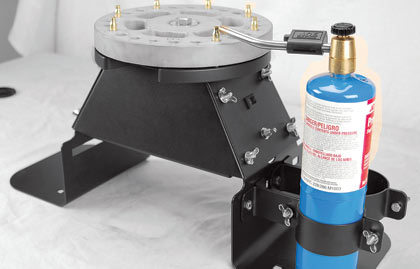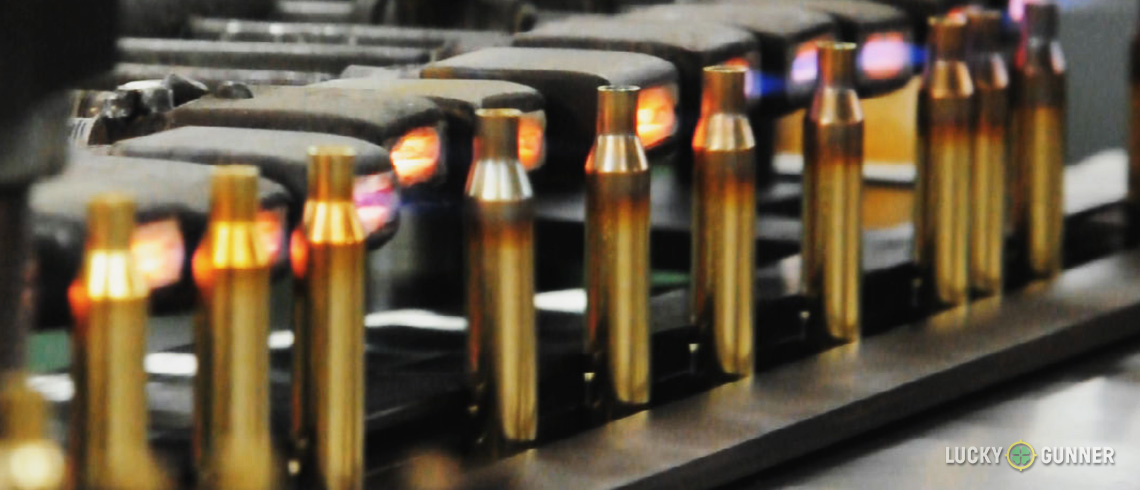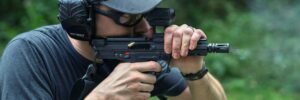Have you ever bought rifle ammo and noticed discoloration around the case neck? Other shooters frequently ask us about that burned or almost “charred” look that some ammunition has. The concern is understandable, since you likely don’t see that burned look on every batch of ammo you purchase.
But there is no cause for concern. That discoloration comes from heat applied directly to the case neck and shoulder and it’s a normal part of the ammunition manufacturing process. This process is called annealing, and whether or not you can visibly see evidence of it on your new ammo, all bottleneck style brass rifle cases are annealed before being shipped to the customer.
Check out the video for more and to get an inside look inside the annealing process. The folks at Hornady were kind enough to let us behind the scenes to capture some video of their manufacturing process so we could help shooters learn a little bit more about what goes into producing their world-class ammunition.
Annealing Explained
The Science Behind Annealing

As I mentioned in the video above, annealing actually helps make the brass case safer and more resilient when the round is fired. The metallurgy or science behind it is fairly simple. When most of us think about “heat treating” something, we think about applying heat to a metal to make it stronger, like in the case of most steel. But annealing is a little different. For brass, the annealing process actually increases the metal’s ductility — a technical term for “stretchability” or softness. When brass is bent, hammered, or shaped, it becomes harder and more brittle. This is what happens to a cartridge case when the neck is formed. The annealing process restores the ductility of the case by reducing internal stresses in the brass, making it easier to stretch under pressure rather than crack.
Many reloaders believe the annealing process also helps them squeeze a little more consistency out of each round. Annealing each case during the reloading process also extends the life cycle of that case, allowing it to be reloaded many more times than a non-annealed case.
Are you a “Self-Annealer”?
If you’re into reloading, have you ever tried to anneal your own cases? If so, how’d you learn how to do it safely? If you’re into annealing, do you also take the time to polish up your rounds before you consider them “done”?





http://www.giraudtool.com/annealer1.htm
Hands down
Thanks for the info
http://www.giraudtool.com/annealer1.htm
Hands down
I have one of these, they are great machines!
What kind of an idiot would ask if the round is ok to shoot because it has a mark on it?
Thanks for the info
You’re welcome, thanks for checking it out Marc!
Yep learned this when I was a kid, from my dad
What kind of an idiot would ask if the round is ok to shoot because it has a mark on it?
If I didn’t know about annealing and I saw what looked like scorch marks on my ammo, I might be a little concerned. Occasionally, bad ammo does make its way out of otherwise reputable factories (see the recent recall of Winchester 22 LR ammo for example), so better safe than sorry. When you’re dealing with what amounts to handfuls of tiny explosive charges going off next to your face, there’s nothing wrong with inspecting your ammo and questioning anything that looks suspect.
An intelligent one.
Yep learned this when I was a kid, from my dad
You're welcome, thanks for checking it out Marc!
If I didn't know about annealing and I saw what looked like scorch marks on my ammo, I might be a little concerned. Occasionally, bad ammo does make its way out of otherwise reputable factories (see the recent recall of Winchester 22 LR ammo for example), so better safe than sorry. When you're dealing with what amounts to handfuls of tiny explosive charges going off next to your face, there's nothing wrong with inspecting your ammo and questioning anything that looks suspect.
I have one of these, they are great machines!
Yeah the video isn't showing up on mobile
Yeah the video isn’t showing up on mobile
Thanks for the info. 🙂
Thanks for the info. 🙂
The store-bought casings I have already been decapped and resized, but after reloading, the bullet can be easily pushed down into the case (the die is not designed to crimp). Wouldn’t annealing cause the case to expand and the bullet even loosed?
Why after heat treatment
Change the color of the neck area